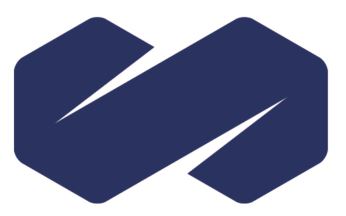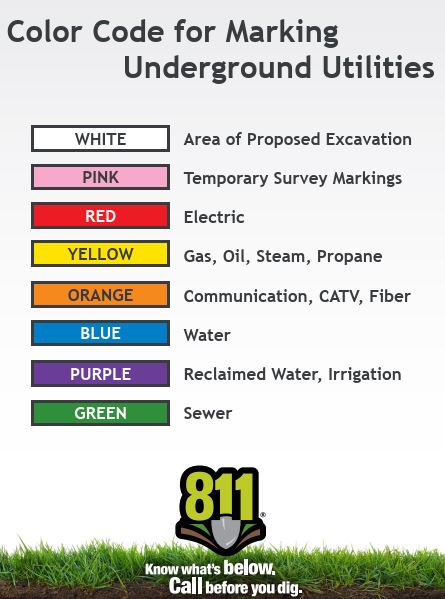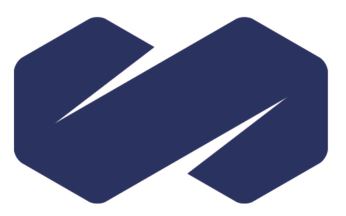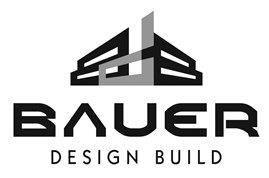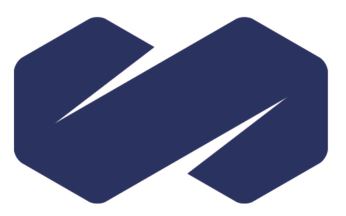Information
-
Prepared by
-
Conducted on
-
Prepared for
-
Project Name:
-
Add location
-
Marsh & McLennan Agency (MMA) provides assistance to employers in evaluating workplace safety exposures and/or conducting surveys, which may not reveal every hazard, exposure and/or violation of safety practices. Inspections conducted by MMA do not result in any guarantee that the workplace, operations, machinery, appliances or equipment are safe or in compliance with applicable regulations. Appropriate protection is ultimately the responsibility of the employer. This report may contain confidential information.
-
The services performed by MMA on this project have been conducted with that level of care or skill ordinarily exercised by reputable members of the profession, practicing in the same locality under similar budget and time constraints. No other warranty is expressed or implied.
-
This report is intended for the sole use of MMA’s client. This report may not be used or relied upon by any other party without the written consent of MMA. The scope of services performed in execution of the evaluation may not be appropriate to satisfy the needs of other users, and the use or re-use of this document or the findings, conclusions, or recommendations is at the risk of said user.
SITE SUMMARY:
-
Add media
PPE:
-
Personal Protective Equipment being worn as required (Hard Hats, Safety Glasses, High Visibility Clothing, Face Shield, Other)
UTILITY LOCATES:
-
Notification process completed (Called 811 a minimum of 48 hours notice excluding holidays/weekends, request made up to 14 days in advance, white excavation boundary markings complete)
-
Locate ticket verified before digging (status checked using ITIC system or by calling 811)
-
Facility operator has marked the excavation site before digging
-
-
Utility locate marks are maintained, and refreshed within 14 calendar days
-
A minimum horizontal (side to side) clearnace of 2 feet between utility and cutting edge of power operated equipment is maintained
EXCAVATION REQUIREMENTS:
-
Description
-
Approximate Excavation Dimensions (Length, Width, Depth)
-
Protective system in use:
- Sloping
- Benching
- Shoring
- Trench Box
Soil Classification
-
Visual Analysis of Soil:
- Soil remains in clumps-Cohesive
- Soil breaks up easily-Granular
-
What method did the competent person use to classify the soil?
-
What was the soil classified as?
- Stable Rock
- Soil Type A 1.5 tons/ft2 or greater (cohesive soil previously undistrubed - clay, silty/sandy clay, clay loam)
- Soil Type B 0.5-1.5 tons/ft2 (cohesive soil and granular cohesionless soils - angular gravel, crushed rock, silt, silt loam, sandy loam)
- Soil Type C 0.5 tons/ft2 or less (cohesive soil or granular soil, submerged soil - gravel, sand, loamy sand, unstable rock, wet soil)
Excavation Checklist 4' to 20' depth (if over 20' must be engineered)
-
Excavations and protective systems inspected by Competent Person daily, before start of work?
-
Protective system in place in an excavation over 5' ft in depth (support systems, sloping and benching systems, shield systems, and other systems)?
-
Excavation properly sloped/benched per soil classification?<br> STABLE ROCK = VERTICAL (90º)<br> TYPE A = 3/4:1 (53º)<br> TYPE B = 1:1 (45º)<br> TYPE C = 1 ½:1 (34º) , CAN NOT BE BENCHED<br><br><br>
-
Spoils, materials, and equipment set back a minimum of 2 ft from edge of excavation?
-
Ladders provided every 25 ft laterally from each worker in excavations over 4' ft in depth?
-
Top of ladders 3' ft or more above grade?
-
Competent Person has authority to remove workers from excavation immediately?
-
Traffic Control in place if required?
-
Have site specific hazards been noted?
-
Surface encumbrances supported or removed?
-
Employees protected from loose rock or soil?
-
Barriers provided at all remote excavations, wells, pits, shafts, etc..?
-
Walkways and bridges over excavations 6' ft or more in depth equipped with guard rails?
-
Employees prohibited from walking under suspended loads?
-
Is trench box labelled and in proper condition?
-
Trucks & delivery drivers advised to stay back 20' ft from excavation?
-
Excavations protected if required to be left open overnight?
Utilities
-
Utility companies contacted and/or located?
-
Utilities marked?
-
Are utilities supported?
Wet Conditions
-
Cautions taken to protect employees from accumulation of water?
-
Water removal equipment monitored?
-
Surface water controlled or diverted?
-
Inspection made after each rainstorm?
Hazardous Atmosphere
-
Excavation greater than 4' ?
-
Is there reasonable possibility of an oxygen deficiency, combustible or other harmful contaminant exposing employees to a hazard?
-
Oxygen content between 19.5% and 21%?
-
Testing conducted to ensure that atmosphere remains safe?
-
Emergency equipment readily available where a hazardous atmosphere could or does exist?
-
Employees trained in the use of personal protective an emergency response equipment?
-
Safety harness and life line individually attended when employees enter permit required confined space?
-
Include photographs of the testing equipment and emergency response equipment.
ADDITIONAL REQUIREMENTS
-
EMERGENCY RESPONSE: First Aid/CPR available at the jobsite and/or EMS Response within 4 minutes. System in place to be able to communicate a jobsite emergency (use of air horn, etc.). Local emergency contact information available (hospital/clinic). Eye wash capable of providing 15 minutes of flushing available on site for caustic/corrosive operations (portland cement).
-
MNOSHA 5207.1000: Excavation Contractor and personnel are trained, Joint contractor safety awareness meeting held to discuss how to approach equipment (visual, voice, or signal), maintaining visibility while approaching (high visibility garments), operator responsibilities, pre use inspections, overhead and underground utilities, equipment blind spots, safe operating procedures of equipment (traveling, backing, parking, loading for transport, maintenance, and operation).
-
PUBLIC SAFETY PROTECTION: Sufficient measures in place based on the potential risk to the general pubic such as Barricades, Fencing, Signage, Pedestrian Access, Curb Ramps, Detours, etc.
-
SILICA: Tasks creating a respirable crystalline silica hazard (concrete dust) have controls in place to mitigate dust (dust collection system, water delivery system). Tools and equipment are compliance with OSHA Table 1, or alternative methods. If relying on alternative methods, objective data or exposure assessment information is available. A Silica Exposure Control Plan been created for each activity by contractor performing the work.
- Safe
- At Risk
- N/A
-
Is Table 1 being used for compliance with the Silica standard?
- Yes
- No
- N/A
-
Include a summary of tasks and method of compliance (exposure study, objective data, etc.)
-
Which Table 1 tools are in use?
- Stationary Masonry Saw
- Handheld Power Saw
- Handheld Saw for cutting fiber-cement siding
- Walk-behind saws
- Driveable saws
- Rig-mounted core saws or drills
- Handheld and Stand Mounted Drills (Rotary Hammer/Impact)
- Dowel drilling rigs
- Vehicle mounted drilling rigs for rock/concrete
- Jackhammers and chipping tools
- Griders, used for Tuckpointing
- Grinders, other uses
- Walk hehind milling machines and floor grinders
- Small driveable milling machines
- Large Driveable Milling Machines
- Crushing Machines
- Heavy equipment used for abrad/fracture/demo
- Heavy equipment used for excavation
-
Engineering Control: Water delivery system required
Respirator: Not required, regardless of location or duration. -
Engineering Control: Water delivery system required
Respirator: Not required outdoors less than 4 hours/shift. Required outdoors greater than 4 hours/shift, or indoors regardless of duration (APF10). -
Engineering Control: Water delivery system required
Respirator: Not required outdoors less than 4 hours/shift. Required outdoors greater than 4 hours/shift, or indoors regardless of duration. -
Outdoor use only
Engineering Control: Dust collection system required
Respirator: Not required outdoors regardless of duration. -
Engineering Control: Water delivery system required
Respirator: Not required outdoors regardless of duration. Required indoors (APF 10). -
Outdoor use only
Engineering Control: Water delivery system required
Respirator: Not required outdoors regardless of duration. -
Engineering Control: Water delivery system required
Respirator: Not required regardless of location or duration. -
Engineering Control: Dust collection system required
Respirator: Not required regardless of location or duration. -
Outdoor use only
Engineering Control: Dust collection system required
Respirator: Required regardless of duration (APF10). -
Engineering Control: Dust collection system with close capture hood/shroud, or operate from enclosed cab with water or dust suppression on drill bit.
Respirator: Not required regardless of duration. -
Engineering Control: Water delivery system or Dust collection system required
Respirator: Not required, outdoors less than 4 hours/shift. Required outdoors greater than 4 hours/shift, or indoors regardless of duration. -
Engineering Control: Dust collection system required
Respirator: Required, if less than 4 hours/shift (APF10) or more than 4 hours/shift (APF25). -
Engineering Control: Dust collection (Indoors/outdoors) or water delivery system (outdoors only)
Respirator: Not required outdoors with water delivery or dust collection regardless of duration. Required indoors with dust collection greater than 4 hours/shift (APF10) -
Engineering Control: Dust collection or water delivery system required
Respirator: Not required regardless of location or duration. -
For cuts of any depth on asphalt only:
Engineering Control: Dust collection and water delivery system required
Respirator: Not required regardless of duration. -
Engineering Control: Water delivery system required
Respirator: Not required regardless of duration. -
Engineering Control: Enclosed cab or wet material to minimize dust
Respirator: Not required regardless of duration. -
Engineering Control: Enclosed cab or wet material to minimize dust
Respirator: Not required regardless of duration. -
Any other concerns or hazards identified on the jobsite?
-
Include a summary of the hazard and mitigation plan.
-
Any examples of best practices, or pro-active safety efforts observed during the site visit?
-
Explain:
-
Are there any safety meetings/toolbox talks being held on the jobsite?
-
Are they being documented?
